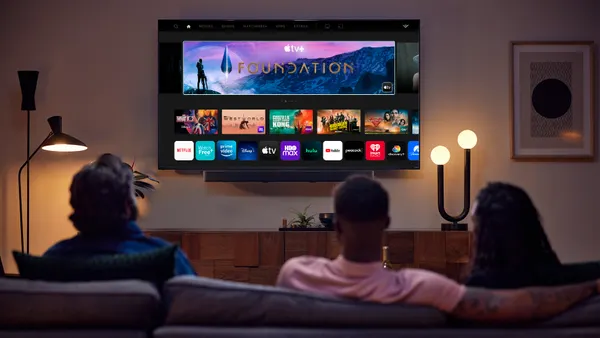Dive Brief:
- Forty-one percent of advertisers were using the Amazon Advertising Platform (AAP) as of July this year, putting it ahead of other demand side platforms (DSPs), according to findings in a new report by Advertiser Perceptions shared with Marketing Dive. Usage of what Google formerly branded as DoubleClick Bid Manager was at 35%, with The Trade Desk ranking third with 26% usage, up from 18% in January 2018. Amazon and DoubleClick were tied for usage at 38% as of January.
- Google announced plans to sunset the DoubleClick branding under a new umbrella called the Google Marketing Platform in June; Amazon similarly folded AAP into a streamlined service called Amazon Advertising in September. Advertiser Perceptions interviewed 483 marketers for its report in July, when DoubleClick was still the commonly used name for Google's service. Advertisers overall used an average of 2.8 DSPs over the past year, and often use different platforms for different purposes. But, if advertisers had to pick one platform, 24% said they would choose Amazon, 17% would choose DoubleClick and 12% would choose The Trade Desk.
- Time and resource efficiency, along with price transparency, led 31% of surveyed advertisers to embrace programmatic advertising. The report found that 37% worry about fraud, viewability and non-human traffic, a 12% increase from January, while 23% worry about pricing transparency and hidden costs, up 5%. Roughly one-fourth (23%) of those surveyed worry about the complexity of managing data, up 6% from the start of the year.
Dive Insight:
The Advertiser Perceptions report is the latest to underpin just how quickly Amazon's advertising business is growing, including through its DSP, which now appears to be outmatching Google's in terms of favorability. As marketers' use of AAP — now under the Amazon Advertising banner — grew, the service formerly called DoubleClick also saw a decline in usage.
Programmatic buyins isn't the only area where Amazon appears to be pulling ahead. Amazon has been the likely third candidate to dethrone the digital advertising duopoly of Facebook and Google for awhile now, but its advantage over Alphabet, in particular, has come into sharper relief in recent months. CNBC reported in October that some marketers are shifting up to 60% of their search budgets typically allocated to Google toward Amazon. The move is mostly occurring among consumer packaged goods brands, which are drawn to Amazon's ability to link advertising closer to the point of sale and provide a more seamless shopping experience.
These developments come as Alphabet's revenue growth missed analyst expectations in Q3 earnings reported late last month amid a growing amount of competition for the tech giant. Amazon's sales slowed in the third-quarter, but its ad business continued to experience explosive growth, jumping 123% to reach $2.5 billion.
In terms of choosing a DSP, audience targeting and reach were the top criteria among advertisers, according to Advertiser Perceptions. Technology factors, like the ability to export data to an advertiser's preferred analytics platform, tech expertise and vision and transparency into costs also ranked highly and helped to underscore the continued investment in programmatic. Advertisers are turning to programmatic for targeting and efficiency, with about one-third of those surveyed seeing programmatic as a solution for leveraging first, second and third-party data.
By 2019, nearly two-thirds of all digital display ads will be programmatic, reaching $84.9 billion, per Publicis Groupe Zenith estimates. Amazon is a big programmatic spender, alone accounting for 10% of the top 50 programmatic advertisers in Q1 2018, according to MediaRadar.
The Trade Desk has been growing quickly, as the new report suggests. The company recently launched its own audience ID solution, the Unified ID Solution, which aims to create a common currency to streamline the matching system that DSP, data management platforms and supply-side platforms undergo.












